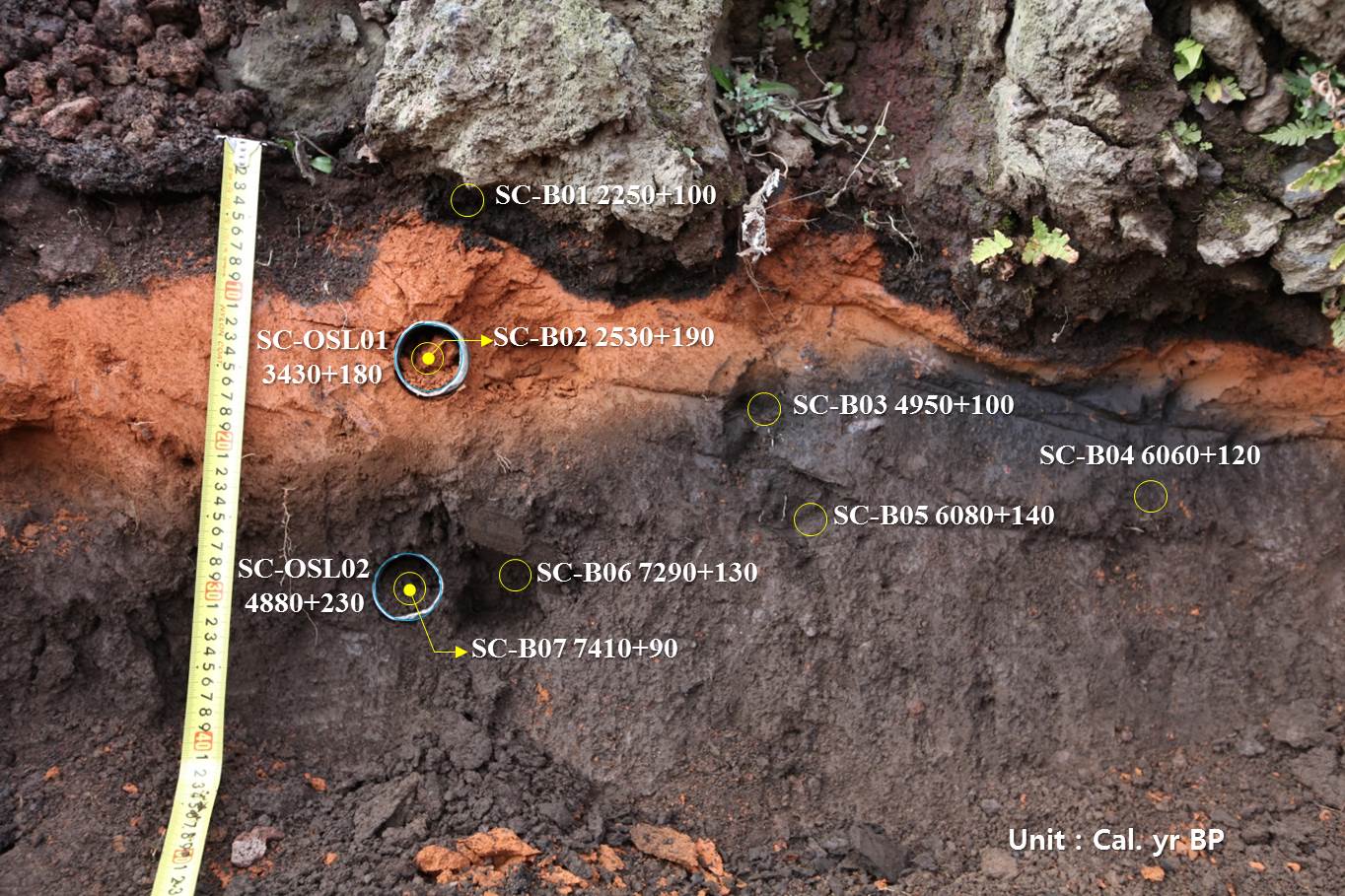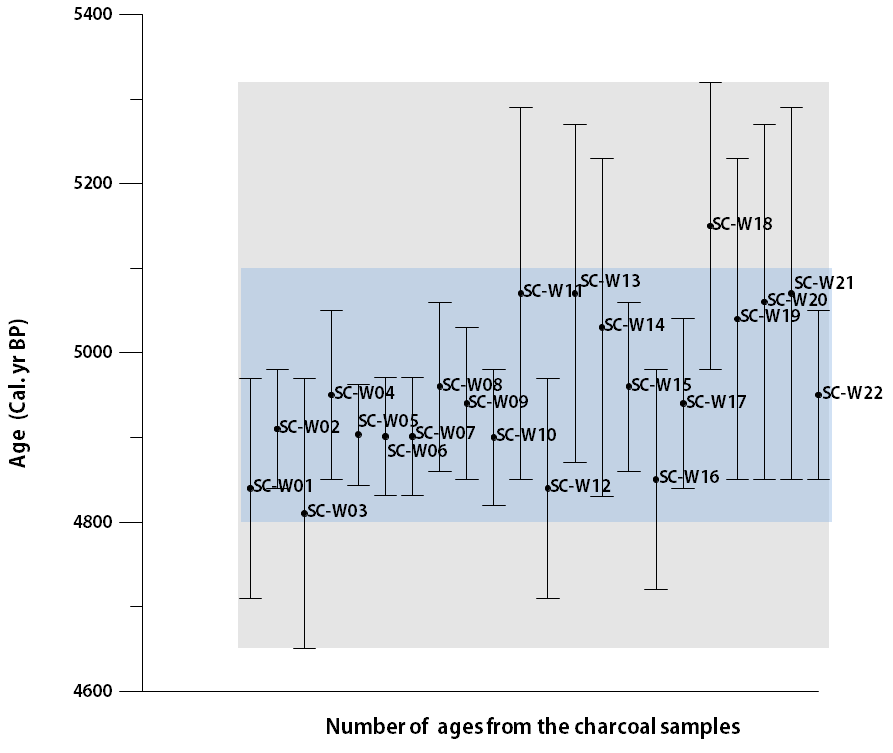- Nameadmin
- Date2014/07/22 00:00
- Hit808
Jeju Island is a live volcano.
In Jeju, a place emerging as a world-famous vacation spot with natural tourism resources, a recent study revealed a volcanic eruption occurred on the island. The Korea Institute of Geoscience and Mineral Resources (KIGAM) indicated that there are the traces that indicated that a recent volcanic eruption was evident 5,000 years ago. That is the first time to actually find out the date when lava spewed out of a volcano 5,000 years ago in the inland part of the island as well as the one the whole peninsula.
The research team led by Dr. Jin-Young Lee confirmed in results from radiocarbon dating for carbonized wood (charcoal) found below the basaltic layer located in Sangchang-ri, Seogwipo-si, Jeju-do it dated back to 5,000 years ago; which means the time when the basalt on the upper layer was formed took place relatively recently, i.e. 5,000 years ago, and which demonstrates that the island has experienced a volcanic eruption fairly recently.

Age Dating Results of the sedimentary layer in Sangchang-ri, Jeju
The latest volcanic eruption occurring on Jeju Island was volcanic activity known to have spewed around 7,000 years ago at Mt. Songak. The basaltic layer in Sangchang-ri is known to be formed due to the eruption in the vicinity of Byeongak Oreum 35,000 years ago; though, this study revealed that the layer is a product of the most recent volcanic activity among those known ever. Volcanic activity at Mt. Songak was limited hydro volcanic activity out of which a great deal of volcanic ash was released while it is evident that Sangchang-ri was a dynamic active volcano out of which lava was spewed and then flowed down in all directions along the inland slope.
It is also remarkable that the research team enhanced the accuracy of the findings in the radiocarbon dating technique using carbonized wood, consequently raising the reliability of the findings. Until now, previous research used the dating method for rocks covering the upper sedimentary layer, in which such dating method with the relatively longer half-life period shows limitations in determining the time the basalt was formed about 10,000 years ago.

Radiocarbon dating results for charcoal collected from the sedimentary layer in Sangchang-ri, Jeju
In order to overcome the limitations of the dating method for the rocks covering the upper sedimentary layer, the research team led by Dr. Jin-Young Lee concurrently used radiocarbon dating and optically stimulated luminescence dating (OSL), using such cross-validation of which raised the accuracy of tracing the past volcanic activities.
Judging from the findings, Jeju Island is not an extinct volcano, but seems to rather be a potentially live volcano because a volcano that has erupted within 10,000 years is defined to be a live volcano on a geological basis.
Not remaining complacent for the findings, the research team plans to continuously conduct the studies on the time the volcanic rocks were formed in several regions on the island in order to identify the latest volcanic activity.

Pictures of the sedimentary layer containing charcoal found on a stony mountain developing site in Sangchang-ri, and the carbonized wood (charcoal) sample used for the radiocarbon dating. Thick lava covers the upper gravel layer.